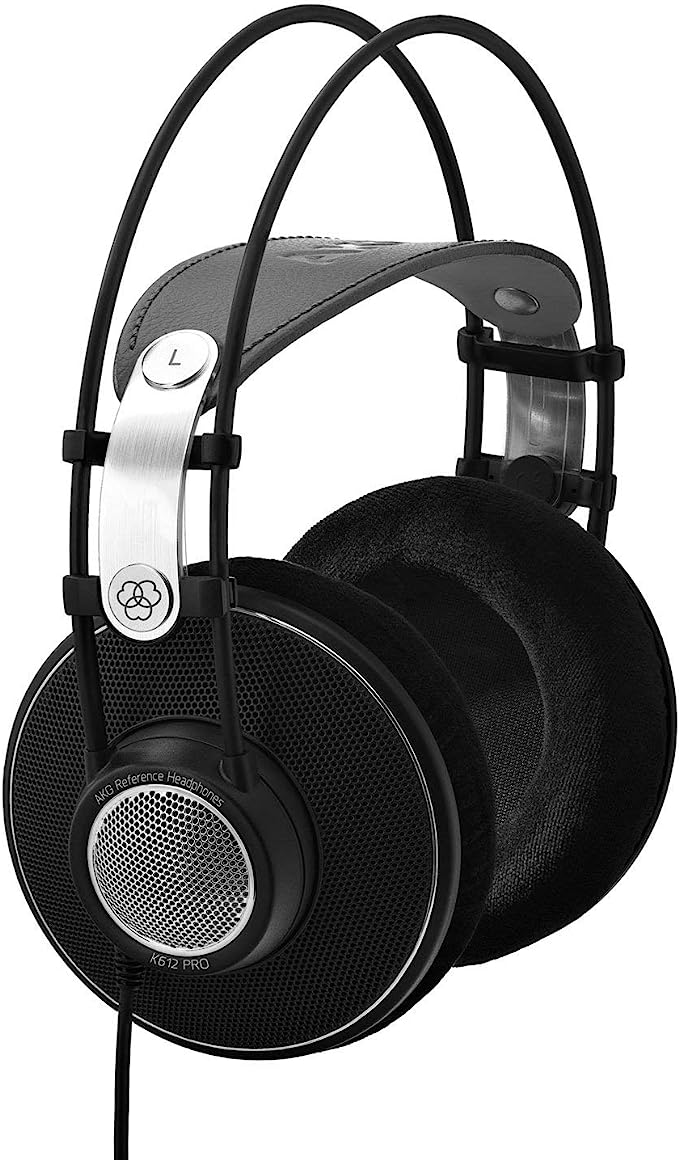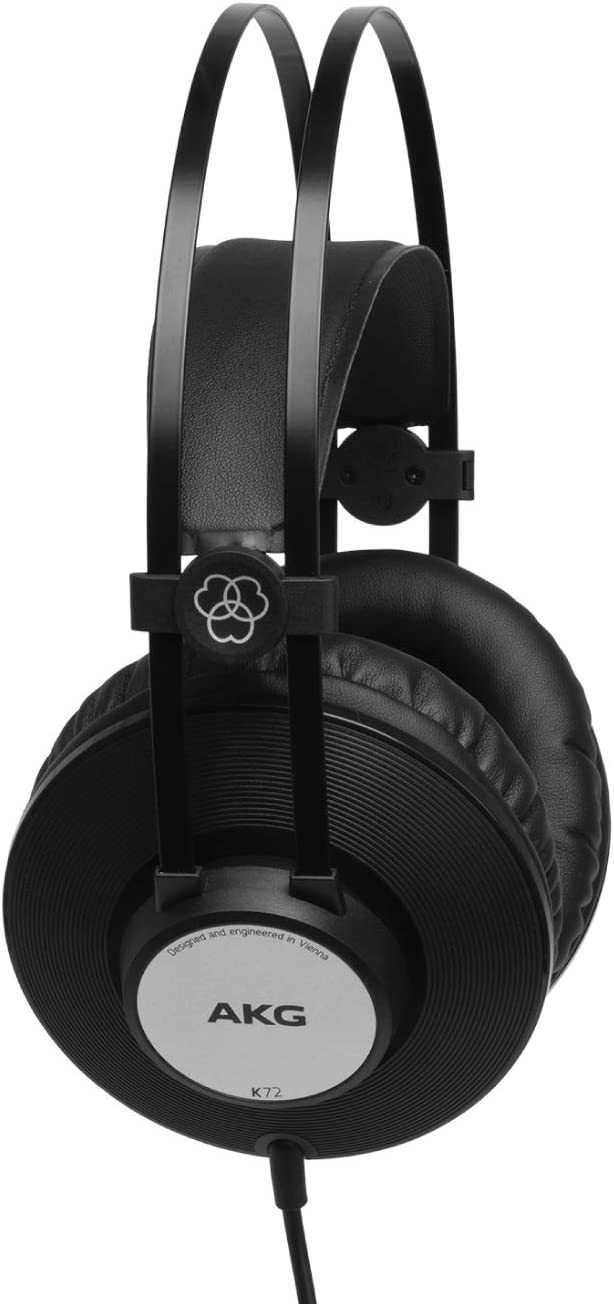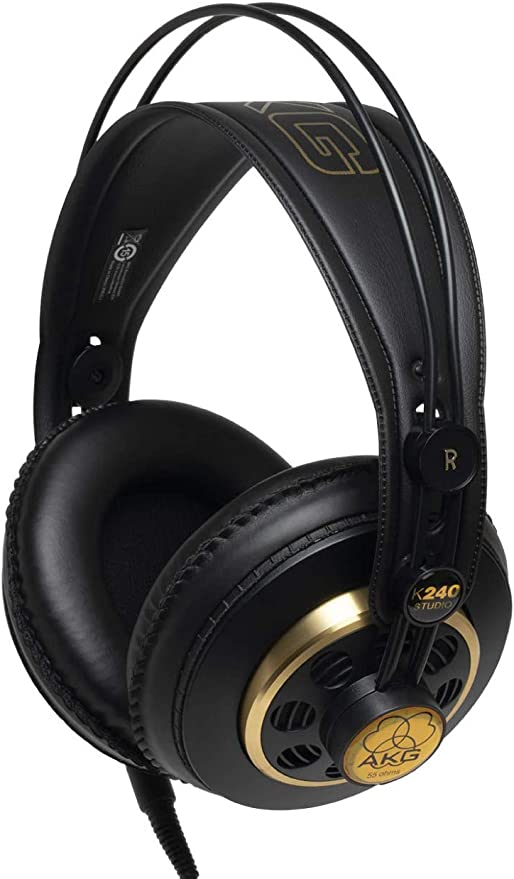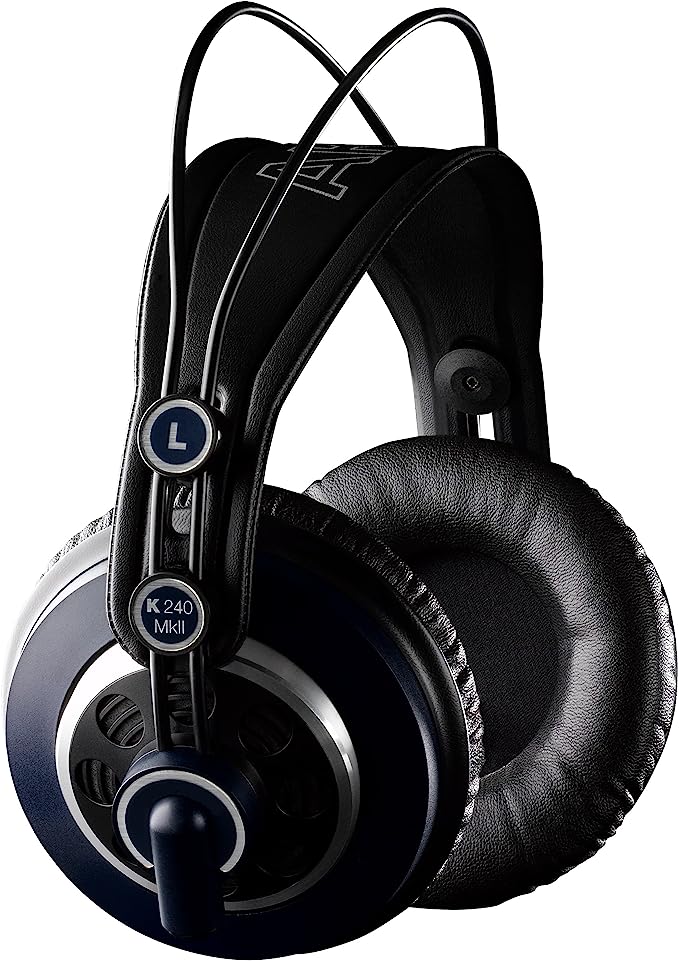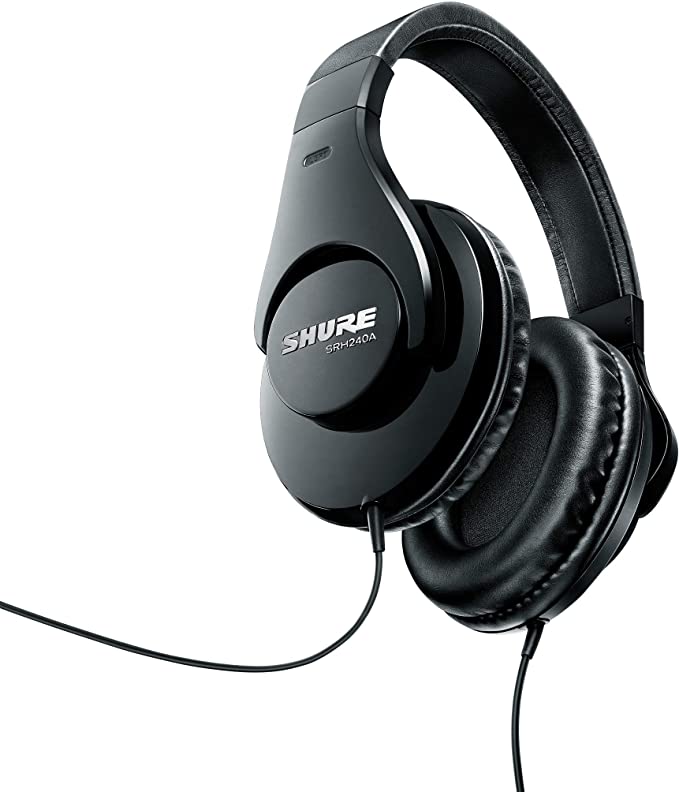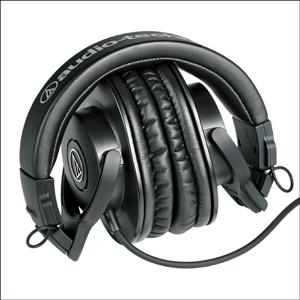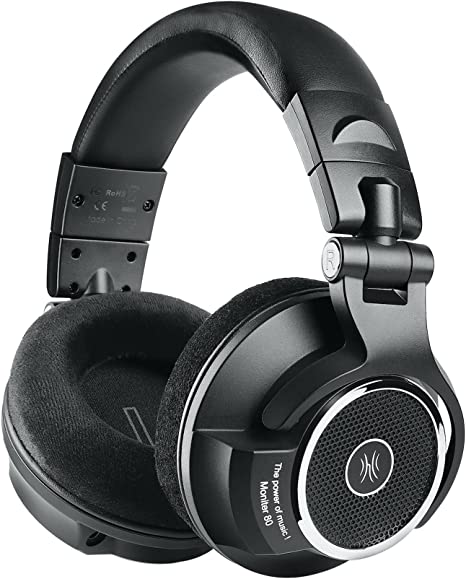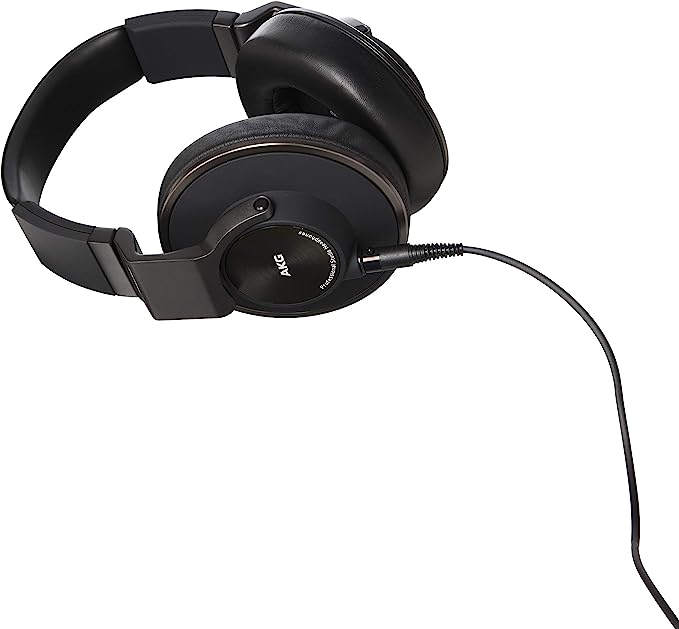AKG Pro Audio K371 Headphones: The Science of Studio-Accurate Sound on the Go
Update on May 19, 2025, 4:39 p.m.
In the world of audio, whether you’re a musician layering intricate harmonies, a podcaster shaping compelling narratives, or a video editor meticulously syncing sound to picture, one fundamental pursuit unites you: the quest for sonic truth. How often have you paused, head tilted, asking, “Is what I’m hearing real? Will this translate faithfully to my audience’s ears?” This desire for an uncolored, honest representation of your audio is not just a preference; it’s a professional necessity. Today, we’ll delve into a remarkable tool designed to aid this pursuit: the AKG Pro Audio K371 Over-Ear Closed-Back Foldable Studio Headphones. But we won’t just look at its features; we’ll explore the fascinating science and thoughtful engineering that make it a potential window to your audio’s genuine character.

The Bedrock of Belief: Why Neutrality is the Studio Standard
Imagine trying to paint a masterpiece in a room bathed in blue light. Every color decision you make would be skewed, your final artwork appearing drastically different once viewed in natural daylight. Professional audio work faces a similar challenge. If your headphones accentuate the bass or artificially brighten the treble, your mixes might sound fantastic on your system but fall apart elsewhere – a common frustration for many creators.
This is where the concept of “neutral sound” becomes paramount. Neutrality, in headphone terms, means the headphones aim to reproduce all frequencies – from the deepest rumbles to the most ethereal highs – at an even level, without undue emphasis or suppression. Think of neutral headphones as a perfectly clear, untinted window, allowing you to see (or in this case, hear) your audio landscape exactly as it is. This fidelity is crucial for making informed mixing and mastering decisions that translate reliably across various playback systems.
The AKG K371 headphones, according to their manufacturer, are “precision-engineered to match AKG’s Reference Response acoustic target to reproduce natural, balanced audio in extraordinary detail.” While the specifics of individual manufacturer “reference curves” can vary, they generally stem from extensive research into how humans perceive sound and what acoustic signature is considered most accurate and pleasing over extended listening periods. The underlying goal is to provide a consistent, trustworthy auditory reference. Many users of neutral-튜닝 (neutral-tuning) headphones, including those who have shared their experiences with the K371 in the provided product information, note that the initial impression might not be an explosive “wow.” One K371 user from the provided text insightfully remarked, “I wasn’t ‘wowed’ when I first put them on. However after extended use I grew to appreciate them…” This is a common experience. Neutral headphones don’t flatter the sound with artificial enhancements; instead, they reveal it, and this honest revelation is what professionals grow to depend on.

Inside the Earcups: The Science Powering the K371’s Sound Engine
At the core of any headphone’s ability to translate an electrical audio signal into the sound waves we perceive are its transducers, or drivers. The K371 employs a sophisticated set of components here, each chosen for its contribution to audio accuracy.
The Might of the 50mm Titanium-Coated Transducers
The K371 features what AKG describes as “largest-in-class, titanium-coated 50mm transducers.” Let’s break down why these details are significant from a scientific standpoint:
-
Size Matters: The 50mm Diameter: Think of a loudspeaker system. Larger woofers are generally better at reproducing low frequencies with authority and less strain. Similarly, a larger headphone driver diaphragm, like the 50mm one here, has more surface area. This allows it to move more air for a given excursion (the distance it travels back and forth). This capability is particularly beneficial for reproducing deep bass notes with clarity and impact, and can also contribute to a greater sense of dynamic range – the difference between the quietest and loudest sounds – as the driver can handle larger swings in signal without excessive distortion.
-
The Titanium Touch: Stiffness and Speed: The material of the diaphragm is critical to how accurately it responds to the audio signal. A diaphragm needs to be incredibly light to react quickly to rapid changes in music (these are called transients – think the crack of a snare drum or the pluck of a guitar string). It also needs to be very stiff to move as a perfect piston, without flexing or “breaking up” at certain frequencies, which would color the sound and introduce distortion. The K371’s drivers are titanium-coated. Titanium is a metal known for its excellent stiffness-to-weight ratio. By applying a thin, rigid coating of titanium, the diaphragm can maintain its shape even when vibrating intensely, leading to a more precise and detailed sound reproduction, particularly in the midrange and high frequencies where our ears are very sensitive to distortion. Imagine a finely tuned drum skin – it’s taut and responsive, producing a clear, defined note. A titanium-coated diaphragm aims for a similar kind of acoustic precision.
-
Pure OFC Voice Coils: The Unhindered Pathway: The voice coil is the wire loop attached to the diaphragm that receives the electrical current from your audio source. As the current flows, it creates a magnetic field that interacts with a fixed magnet in the driver, causing the coil – and thus the diaphragm – to move. The K371 utilizes pure OFC (Oxygen-Free Copper) voice coils. Copper is an excellent conductor of electricity, and “oxygen-free” means it has been refined to reduce oxygen content to very low levels (typically less than 0.001%). This high purity minimizes impurities and grain boundaries that could impede the electrical signal, ensuring a cleaner, more efficient transfer of energy to the diaphragm. It’s like having a super-smooth, unobstructed highway for the audio signal to travel down, preserving its integrity.
Collectively, these transducer technologies aim to deliver, as one user from the provided text put it, “clear, detailed and balanced lows, mids and highs.”

Beyond Human Hearing? Understanding the Expansive 5Hz – 40kHz Sonic Canvas
The AKG K371 is specified with a “best-in-class frequency response: 5 Hz to 40 kHz,” according to the manufacturer. To put this into perspective, the generally accepted range of human hearing is from about 20 Hz (the deep rumble of a pipe organ’s lowest note) to 20,000 Hz, or 20 kHz (the delicate shimmer of a cymbal’s highest overtones), and this range tends to decrease with age, especially at the higher end.
So, why design headphones that can reproduce frequencies seemingly far below and above what we can directly “hear”?
-
The Realm of Sub-Bass (Below 20 Hz): Frequencies like 5 Hz are well into the infrasonic range. While we may not perceive them as distinct pitches, their presence can be felt as a physical sensation or contribute to the overall sense of scale, power, and realism in certain types of music (like electronic music or film scores with deep sound effects). Their accurate reproduction, even if not consciously heard as a note, ensures that the full weight and impact intended by the artist are conveyed.
-
The Ethereal Highs (Above 20 kHz): Similarly, while direct perception of tones above 20 kHz is rare, these ultrasonic frequencies can contain harmonics and overtones that subtly interact with audible frequencies. Some acousticians and engineers believe these interactions can influence the perceived timbre, “airiness,” and spatial qualities of sound. By extending the response to 40 kHz, the K371 aims to capture these subtle nuances, potentially contributing to a more natural and detailed soundstage. It’s like an artist having a full spectrum of colors on their palette; even if some are used sparingly or for subtle shading, their availability contributes to the richness of the final painting.
The goal of such a wide frequency response in a studio monitor headphone is to ensure that no part of the audio signal is inadvertently lost or misrepresented, allowing creators to work with the fullest possible sonic information.
Power and Poise: Sensitivity and Impedance for Versatile Performance
Two other key specifications that define how headphones interact with your audio sources are sensitivity and impedance. The K371 is rated with a “best-in-class sensitivity: 114 dB and optimal 32-Ohm impedance,” as per the product information.
-
Sensitivity (114 dB SPL/V): Sensitivity measures how loud the headphones will play for a given amount of electrical power (often expressed as decibels of Sound Pressure Level per milliwatt or per volt). A sensitivity of 114 dB SPL/V is quite high, meaning the K371 headphones can reach substantial listening volumes without requiring a lot of power. This is beneficial because it allows them to be effectively driven by a wide range of audio devices – from professional studio interfaces and dedicated headphone amplifiers to more modest sources like laptops, tablets, and smartphones.
-
Impedance (32 Ohms): Impedance is essentially the electrical resistance the headphones present to the audio source. A 32-Ohm impedance is considered relatively low and is a common standard for headphones designed for versatility. Lower impedance headphones generally require less voltage to reach a given volume, making them easier for portable devices with limited output power to drive effectively. This combination of high sensitivity and moderate-low impedance means the K371 is engineered to deliver consistent, robust performance whether you’re in a fully equipped studio or working on the go.
The Listening Sanctuary: Closed-Back Design for Focus and Comfort
The physical design of headphones plays a massive role in both their acoustic performance and how comfortable they are to wear for extended periods – a crucial factor for anyone spending hours immersed in audio work. The AKG K371 features an “Over-Ear, Closed-Back, Oval Design.”
The Cloak of Concentration: Acoustic Principles of Closed-Back Headphones
Headphones are broadly categorized into open-back and closed-back designs. The K371 is a closed-back model, meaning the outer shell of the earcup is solid, sealing the back of the driver from the outside environment. This design choice has several significant acoustic implications:
-
Superior Sound Isolation: This is perhaps the most prominent advantage. By creating a sealed chamber around your ear, closed-back headphones significantly reduce the amount of ambient noise seeping into your listening experience. If you’re trying to make critical mixing decisions, monitor recordings in a room with other musicians, or simply focus on your audio project in a noisy environment (like a bustling home office or during travel), this isolation is invaluable. It works both ways: closed-back designs also prevent much of the headphone’s sound from leaking out into the surrounding environment. This is vital when recording vocals or acoustic instruments with a nearby microphone, as it minimizes the chance of the headphone’s backing track “bleeding” into the mic and compromising the recording. You can think of them as creating a mini, personal control room around your ears.
-
Enhanced Low-Frequency Response: The sealed volume of air within the earcup can also lead to a more pronounced and extended low-frequency (bass) response compared to many open-back designs. The acoustic energy from the back of the driver is contained and often strategically utilized to reinforce the bass, giving it a sense of solidity and depth. The product information highlights this as an “improved low-frequency response.”
While closed-back headphones excel at isolation and often provide robust bass, it’s a general characteristic that they might present a more “in-head” soundstage compared to the often more expansive and “out-of-head” feel of open-back headphones. This is a typical trade-off in headphone acoustics, and for the K371’s intended studio and content creation applications, the benefits of isolation frequently outweigh the desire for the widest possible soundstage, which might be prioritized for purely recreational listening. One user from the provided text mentioned finding the soundstage “compressed” for movies and games, which aligns with this general characteristic of closed-back designs primarily tuned for monitoring accuracy rather than cinematic immersion.
The Ergonomic Embrace: Built for the Marathon, Not Just the Sprint
For any tool a creator uses for hours on end, comfort is not a luxury but a necessity. The K371 incorporates several features aimed at ensuring sustained comfort:
-
Oval Earcups and Plush, Slow-Retention Foam: The earcups are oval-shaped, designed to ergonomically fit around the ears rather than pressing directly on them. They are padded with what AKG describes as “plush, slow-retention foam.” This type of foam, often similar to memory foam, conforms to the unique contours of the listener’s head, distributing pressure evenly and creating a good acoustic seal – which, as we’ve seen, is important for both isolation and consistent bass response.
-
Adjustable Calibrated Headband: A proper fit is essential. The K371 features an adjustable headband with calibrations, allowing users to find and remember their preferred setting for a secure and comfortable fit every time.
-
Lightweight Construction: Weighing in at a mere 255 grams (approximately 8.9 ounces), according to the product data, the K371 is designed to minimize physical strain. Lighter headphones reduce pressure on the top of the head and around the ears, helping to “keep ear fatigue at bay, even on the longest listening sessions,” as the manufacturer puts it.
-
Practical Portability: Recognizing the mobile nature of modern creativity, the K371 headphones are foldable, collapsing into a more compact form for easier storage in the included carrying pouch. Details like metal reinforcement in key parts also speak to a design intended to withstand the rigors of travel and frequent use. The earcups also swivel 90 degrees, a handy feature for quick, single-ear monitoring if you need to briefly check your sound while also staying aware of your surroundings.
The Creator’s Companion: Where Science Meets Application
The true measure of any studio tool lies in how effectively its scientifically engineered features translate into tangible benefits for the creator. The AKG K371, with its emphasis on neutral sound reproduction, detailed transducer performance, isolating closed-back design, and long-wearing comfort, positions itself as a versatile companion for a variety of audio tasks.
Musicians tracking instruments or vocals can benefit from the isolation, ensuring clean recordings without headphone bleed, while the accurate sound allows them to make better performance choices. Mixing engineers, whether in a dedicated studio or a more makeshift environment, rely on the neutral tuning to make critical balance and equalization decisions that will hopefully translate well to other playback systems. As one K371 user from the product information stated, they are “great for music because they are very neutral…studio monitor headphones designed for mixing music.” Another praised the “very balanced” sound, finding the “lows, mids and highs…all evenly represented without any washing out, muffling or muddying.”
Podcasters and voice-over artists can appreciate the vocal clarity and isolation when recording and editing, ensuring their voice is captured and presented cleanly. Video editors, who often work in varied environments, can use the K371 for detailed audio editing, dialogue cleanup, and sound design, trusting that what they hear is a close representation of the final product. Even audiophiles who prioritize accuracy over a heavily “flavored” sound might find the K371’s honest presentation appealing for critical listening sessions. The ability to hear “every detail you need to make critical mix decisions,” as highlighted in the product description, is the core value proposition.

Beyond Listening: Understanding and Trusting Your Sound
The journey into high-fidelity audio can be transformative. When you transition from consumer-grade audio devices, often tuned for immediate but potentially misleading impact, to a pair of studio-quality headphones like the AKG K371, the experience can be, as one user eloquently put it, like “listening to your songs for the first time all over again…it feels like there’s nothing between you and the music.”
The AKG K371 headphones, as we’ve explored, are a carefully considered synthesis of acoustic science, material engineering, and ergonomic design. From the targeted neutrality of their reference response curve to the rapid precision of their titanium-coated drivers, and the focused environment created by their closed-back earcups, every element is geared towards one primary goal: providing an accurate, detailed, and reliable window into your audio.
Ultimately, tools like these are about empowerment. They empower musicians, producers, podcasters, and all manner of content creators to hear their work with clarity, to make decisions with confidence, and to trust that the sonic tapestry they weave will be faithfully conveyed. Understanding the science behind such tools doesn’t just satisfy curiosity; it deepens our appreciation for the art of listening and the meticulous craft of sound creation.
